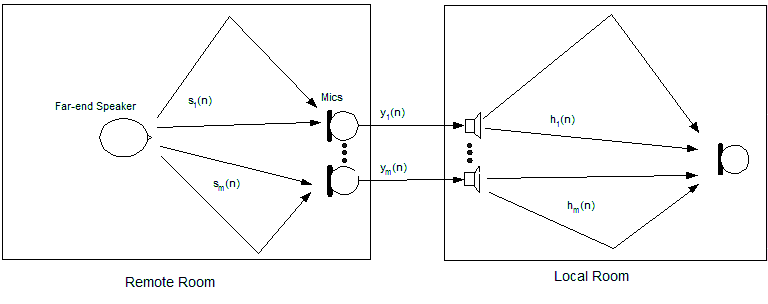Besides using wideband audio, the application of stereophonic and multichannel devices add to the sense of sound realism in teleconferencing systems. The addition of an audio transmission channel allows users in the near-end room to have the ability to distinguish between speakers in the remote room. As in all acoustic hands-free communications systems, acoustic echo cancellation (AEC) is a requirement. Multichannel acoustic echo cancellation provides an additional set of signal processing challenges as compared to monophonic echo cancellation.
There are several differences between stereophonic / multichannel and monophonic echo cancellation. The number of echo paths in the local room increases from one to M in the multichannel system, where M is the number of transmission channels. But in reality echo cancellers in the local room must model M2 echo paths. The reason for this is because the impulse response from the far-end speaker to each individual microphone also has to be modeled. The echo canceller in the local room not only has to track changes in the near-end echo paths, but also the echo paths of the remote room. Therefore, the echo canceller has to retrain when the far-end speaker moves or if a different speaker starts talking.
